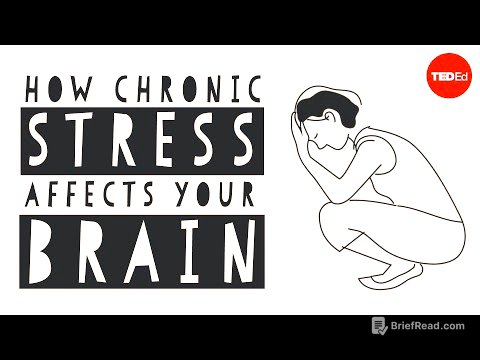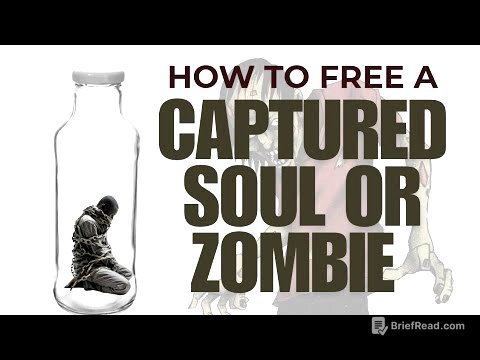TLDR;
Jonathan Bricker discusses the epidemic of unhealthy living, focusing on obesity and tobacco use, and introduces "willingness" as a key to self-control. Willingness involves allowing cravings to come and go without acting on them, contrasting with the common approach of avoiding cravings. He shares research findings indicating that individuals who practice willingness are more successful in quitting smoking. Through the story of "Jane," he illustrates how awareness, acceptance, and self-compassion can help manage cravings and break free from addictive behaviors. The core message is that giving up the struggle against cravings can diminish their power, offering a path to healthier choices.
- The epidemic of unhealthy living is a major global issue, with obesity and tobacco use being significant contributors.
- Traditional methods of avoiding cravings may not be as effective as the "willingness" approach.
- Willingness involves accepting and allowing cravings without acting on them, reducing their power over time.
- Self-compassion and awareness of thoughts and feelings are crucial components of the willingness approach.
Introduction: Personal Anecdotes and the Epidemic of Unhealthy Living [0:10]
The speaker introduces the topic of unhealthy living by sharing personal anecdotes about his parents: his mother, who started exercising later in life and achieved remarkable fitness goals, and his father, who instilled in him a love for science. These values have guided him to address the epidemic of unhealthy living, specifically obesity and tobacco use, which affect billions worldwide and are leading preventable causes of premature death. He frames solving these issues as a complex jigsaw puzzle involving genetics, brain neurotransmitters, and environmental influences.
The Key to the Puzzle: The Science of Self-Control and Willingness [2:40]
The speaker introduces "willingness" as a crucial element in addressing addictive behaviors. Willingness involves allowing cravings to arise and pass without acting on them, contrasting with the conventional approach of suppressing or avoiding cravings. He clarifies that willingness is not about willpower or "powering through" cravings but rather about dropping the struggle, opening up to the cravings, and making peace with them. He recounts his initial skepticism towards willingness and his eventual realization of its potential after attending a workshop and studying Acceptance and Commitment Therapy (ACT).
Challenging Traditional Approaches: "Turn It Off" [5:11]
The speaker contrasts willingness with traditional methods of quitting smoking and losing weight, which often involve avoiding cravings and distractions. He illustrates this with a song excerpt that advises turning off unwanted feelings. Using the example of freshly baked cookies, he demonstrates the futility of trying to suppress cravings, as it often intensifies the desire. He suggests that instead of turning off the "light" of cravings, one can learn to leave it on and observe it without acting on it.
Research and Clinical Trials: The Effectiveness of Willingness [7:12]
The speaker discusses the research being conducted at his lab at the Fred Hutchinson Cancer Research Center, which involves randomized clinical trials to assess the effectiveness of willingness in helping people quit smoking. These trials utilize face-to-face interventions, a telephone quit smoking hotline, a website (webquit.org), and an app (SmartQuit) to reach a wide audience. Data from six published clinical trials indicate that individuals assigned to the willingness condition were twice as likely to quit smoking compared to those using avoidance approaches.
Willingness in Action: The Story of Jane [8:36]
The speaker shares the story of "Jane," a composite of his experiences counseling people to quit smoking, to illustrate willingness in action. Jane, a 45-year-old smoker who had tried unsuccessfully to quit before, initially struggled with the concept of tracking her cravings. She realized she was smoking on autopilot and became overwhelmed by her increased awareness of cravings. The speaker introduced her to the exercise "I am having the thought," which helped her create space between her thoughts and actions.
Overcoming Shame and Embracing Self-Compassion [11:56]
The speaker addresses Jane's feelings of shame and judgment related to her smoking habit. He encouraged her to treat herself with the same caring and kindness she would offer a friend in a similar situation. This approach helped her find temporary relief from shame, making it easier to resist cravings. The speaker emphasizes that the secret to self-control is to give up control, dropping the "rope" in the tug-of-war with cravings.
The Secret to Self-Control: Dropping the Rope [13:19]
The speaker uses the metaphor of a tug-of-war with a "craving monster" to illustrate the struggle against cravings. He explains that constantly fighting cravings only strengthens them. Instead, he advises dropping the rope and allowing the craving to exist without acting on it. By doing so, one discovers that the craving is not as threatening as it seems and may eventually dissipate.
Conclusion: Bringing Caring and Kindness to Your Choices [14:29]
The speaker encourages the audience to practice awareness and willingness when faced with food choices during lunch. He advises them to observe their cravings and see if they pass on their own, and to approach their choices with self-compassion and kindness. He concludes by stating that this practice is the "mountain that we are all climbing," emphasizing the ongoing journey of self-control and healthier living.









